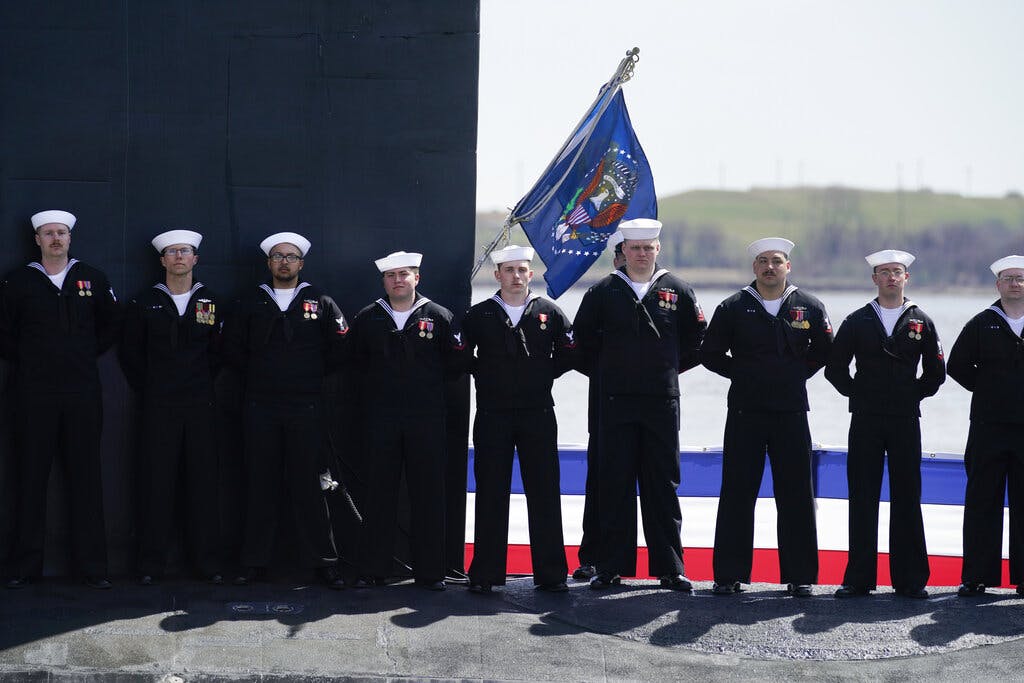Don’t Sink the Navy To Save It
The logic of cutting the fleet size today in order to fund its future growth is not finding traction among knowledgeable observers on either side of the aisle. It simply doesn’t make any sense.

“It became necessary to destroy the town to save it.”
That 1968 dispatch by Associated Press reporter Peter Arnett became a trope for the Vietnam conflict. Today, it may illuminate the Biden administration’s strategy for the United States Navy.
The Navy just submitted its Fiscal Year 2023 budget request. It calls for decommissioning 24 active warships, ostensibly to save $3.6 billion over the next five years — in order to use the savings to start building a mere nine new ships. The first problem is that both the Navy’s top officer and two successive civilian administrations have repeatedly said that the Navy must grow to 500 ships, up from 298 vessels today. Otherwise, the Navy will simply not be equipped to do the jobs demanded of it.
The logic of cutting the fleet size today in order to fund its future growth is not finding traction among knowledgeable observers on either side of the aisle. It simply doesn’t make any sense. “HINT: If you want to grow the Navy, stop decommissioning more ships than you build,” tweeted Representative Elaine Luria, a Democrat from Virginia who serves as Vice Chair of the House Arms Services Committee.
Ms. Luria is a Naval Academy graduate who spent twenty years as a surface warfare officer. She didn’t hold back or couch her tweets in conventional political rhetoric, “I have delayed putting out a statement about the Defense Budget because frankly it would have been mostly full of words you might expect from a Sailor, but here goes: It sucks.”
Ms. Luria added: “The Navy will be losing 1000-plus vertical launch system missile cells, with no plan to replace them. Instead, the Navy is investing in the next ‘Gucci’ missile and technology that will not be mature for 20-plus years. The Navy has no strategy.”
Senator Inhofe, the ranking Republican on the Senate Armed Services Committee not only questioned the Navy’s logic but believes the real number may be only eight new builds because the Pentagon may be double-counting an earlier approval.
The Navy’s portion of the proposed $773 billion Defense budget is $180.5 billion. That is only 4.8 percent higher than last year’s enacted funding and insufficient to keep up with the current inflation rate of 7.9 percent. Given this level of spending, the Navy will actually shrink to 280 ships by fiscal year 2027.
Among the ships to be scrapped are five older cruisers which are very expensive to maintain and operate. But the proposal also includes retiring nine of the newest ships in the fleet: small Littoral Combat Ships (LCS) that have proven to be an embarrassment of poor planning and mechanical problems.
Yet one of the most respected defense thinkers in the nation, a former Vice Chairman of the Joint Chiefs and retired Admiral, James Winnefeld, thinks they are “versatile ships that could be reconfigured away from the anti-submarine warfare mission and towards other missions in which, at a lower level of conflict intensity, they could be very effective.”
The LCSs possess one other attribute that should not be minimized: they exist. Presence counts, especially in light of the just-released National Defense Strategy which identifies China as the major threat.
Four of the ships the Navy hopes to build to replace the vessels it plans to mothball are a new class of ship called Constellation class frigates. Unfortunately, the first ship in the new, unproven class hasn’t even begun construction. It isn’t scheduled to be delivered before 2026, and won’t achieve operational status until 2030. That schedule, of course, assumes the new ships won’t experience the delays that have plagued other recent ship introductions.
Given what the world has witnessed in Ukraine over the past six weeks, the Navy should pay particular attention to Admiral Winnefeld’s observation that “Highly visible platforms like tanks, helicopters and, yes, ships are extremely vulnerable to modern weapons, including some that are quite inexpensive.”
He adds that “As the Russians are finding, these weapons are driving conventional forces beyond ranges where they can accomplish their true mission. Many who are arguing for a larger fleet — often due to political, financial, or cultural reasons rather than solid war fighting reasons — miss the point that we should be considering a fleet that is configured differently, which the Navy will need resources to equip, man and train.”
The Biden administration needs to scrap its lose-lose-lose strategy rather than scrap ships. Taking (even less efficient) vessels off the international chess board without immediate replacements is foolish. Second, it must adequately fund a Navy whose presence — not just in the South China sea but along vital sea lanes and in hotspots around the globe — is more important than ever. And it needs to start thinking strategically about the next conflict, not the last one.

